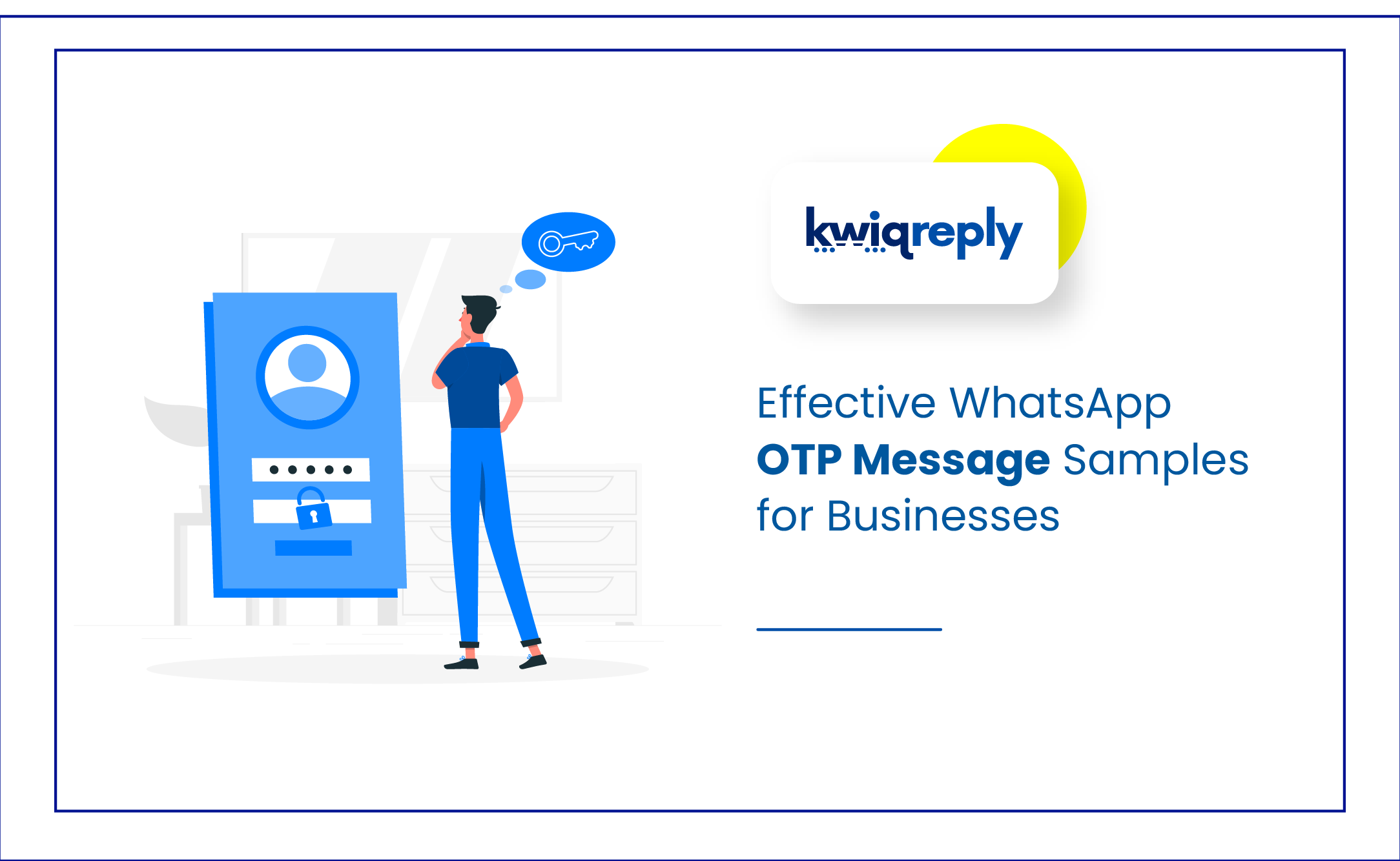
Effective WhatsApp OTP Message Samples for Businesses
In the landscape of digital communication, WhatsApp has emerged as a prominent platform for businesses to engage with customers, streamline operations, and enhance security. One common use case for businesses on WhatsApp is the transmission of one-time passwords (OTPs) to verify user identities, authenticate transactions, and ensure data security.
These OTP messages play a crucial role in safeguarding sensitive information and maintaining trust between businesses and their customers. In this blog post, we'll explore effective WhatsApp OTP message samples that businesses can use today to enhance security and improve user experience.
Importance of WhatsApp OTP Messages

WhatsApp OTP messages serve as a secure and convenient method for verifying user identities and protecting sensitive information. Some of the more common ones are logging into an account, completing a transaction, or resetting a password.
OTP messages provide an additional layer of security by requiring users to enter a temporary code sent to their registered phone number. By leveraging WhatsApp as a communication channel for OTP delivery, businesses can enhance security, reduce fraud, and build trust with their customers.
WhatsApp OTP Message Samples
Account Verification:
"Your [Business Name] account verification code is [OTP]. This code will expire in [expiration time]. Please do not share this code with anyone. Thank you for choosing [Business Name]."
Transaction Confirmation:
"Your OTP for completing the transaction of [amount] with [Business Name] is [OTP]. This OTP is valid for [expiration time]. Please use it to verify your transaction. For any assistance, contact our support team."
Password Reset:
"Your OTP to reset your password for [Business Name] is [OTP]. This OTP will expire in [expiration time]. If you did not request this change, please ignore this message. For security purposes, do not share this OTP with anyone."
Account Activation:
"Welcome to [Business Name]! Your OTP for account activation is [OTP]. Please enter this code to complete the registration process. If you did not initiate this request, please disregard this message."
Two-Factor Authentication (2FA):
"To enhance security, we require a one-time code to verify your identity. Your OTP for [Business Name] is [OTP]. Please enter this code to continue. Thank you for choosing [Business Name]."
Verification Code Request:
"Thank you for your interest in [Business Name]. Your OTP for verification purposes is [OTP]. This code will expire in [expiration time]. Please enter it to proceed with your request."
Subscription Confirmation:
"Welcome back to [Business Name]! Your OTP for subscription confirmation is [OTP]. Enter this code to confirm your subscription and continue enjoying our services."
Account Recovery:
"If you've forgotten your password, use the OTP [OTP] to reset it. This code will expire in [expiration time]. For security reasons, do not share this OTP with anyone."
Secure Login:
"Your OTP for secure log in to your [Business Name] account is [OTP]. Please enter this code to access your account securely. If you did not request this code, please ignore this message."
Payment Authorization:
"To complete your payment transaction of [amount] with [Business Name], please enter the OTP [OTP]. This code will expire in [expiration time]. For assistance, contact our support team."
Best Practices for WhatsApp OTP Messages
Keep Messages Clear and Concise: Ensure that OTP messages are easy to understand and free from ambiguity. Use simple language and provide clear instructions on how to use the OTP.
Specify Expiration Time: Include the expiration time of the OTP in the message to inform users of the validity period. This helps to prevent misuse of expired OTPs and enhances security.
Warn Against Sharing: Remind users not to share OTPs with anyone for security reasons. Emphasize the importance of keeping OTPs confidential to prevent unauthorized access to accounts or transactions.
Provide Support Contact Information: Include contact information for customer support in OTP messages to assist users who may encounter issues or require assistance.
Use Branded Messaging: Maintain consistency with your brand identity by using branded messaging in OTP messages. This helps to reinforce brand recognition and instill trust in users.
Concluding,
WhatsApp OTP messages play a critical role in ensuring security, protecting sensitive information, and enhancing user experience for businesses and customers alike. By leveraging WhatsApp as a communication channel for OTP delivery, businesses can reduce fraud and build trust with their audience.
When crafting OTP messages, it's essential to keep them clear, concise, and informative, while also emphasizing the importance of security and confidentiality. By following best practices and using our WhatsApp OTP message samples, businesses can enhance security measures, improve user experience, and strengthen relationships with their customers on WhatsApp.
At kwiqreply, we help you fully leverage the features of the WhatsApp Business API for your organization. kwiqreply is the best WhatsApp Business API CRM and Helpdesk for Small Businesses. kwiqreply’s integration with the API offers dynamic features such as bulk messaging, customizable templates, AI-powered WhatsApp chatbots, and much more.
So, seize the opportunity, leverage WhatsApp's potential, and propel your business toward sustainable growth and success! Know more about WhatsApp Business API’s features and start nurturing leads with kwiqreply by clicking the link below.
Click here to book a free demo and let us show you how you can do more business with WhatsApp.
Read more blogs like this -